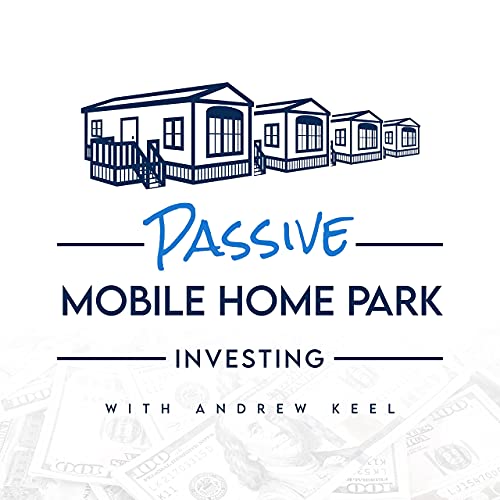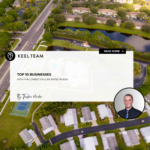Key Risks of Low-Occupancy Mobile Home Park Investments
-
 Tristan Hunter - Investor Relations
Tristan Hunter - Investor Relations

When considering mobile home park investments, particularly those focused on infill and increasing occupancy, passive investors should be aware of the unique challenges these projects can bring. Low-occupancy mobile home parks, though seemingly straightforward, carry specific risks that may affect return potential and timelines. Here, we’ll examine why infill-focused projects may add more complexity than meets the eye.
Budgeting Challenges: Why Costs Often Exceed Estimates
One of the primary issues with low-occupancy mobile home park projects is budgeting accurately for infill. When planning these projects, many estimates for setup costs, utilities, and other expenses are based on ballpark figures rather than precise calculations. Factors like rising material costs can cause budgets to escalate, which may disrupt the financial viability of the project if there’s no contingency fund.
For instance, infill projects require plumbing, electrical hookups, and often additional groundwork, all of which can vary significantly in cost based on location and market conditions. Investors should remain cautious if an operator’s budget doesn’t include a flexible fund to cover unexpected expenses.
Unexpected Hurdles in Hiring Contractors
Choosing the right contractors can be vital for infill projects. New operators may face issues with licensing and experience, impacting project timelines and costs. In some cases, contractors without the proper certifications might lead to non-compliance with local building codes, which can stall occupancy permits and add to expenses.
Investors should consider whether the operator has a reliable network of licensed contractors or if they’re hiring for the first time. A well-connected operator can help avoid costly delays and ensure that all work meets local standards.
Logistical Complications in Home Transportation
Transporting mobile homes across state lines can create unexpected delays and add costs. Many transport companies cannot move homes across state boundaries, requiring a transfer to another transporter at the state line. Each switch means extra fees, adding to project costs.
Furthermore, some states require federal inspectors for new homes, in addition to local inspectors, who ensure compliance with HUD standards. If an operator is unfamiliar with these regulations, this oversight can cause further delays and budget strain.
Download our FREE eBook on the Top 20 things to know BEFORE investing in mobile home parks!
Utilities: The Unseen Risk in Infill Projects
Utility hookups pose another risk area, especially in projects involving older infrastructure. Some mobile home parks may have outdated electrical systems or insufficient transformers to handle new 200-amp homes. In one instance, we had to install several new transformers due to voltage issues, which incurred substantial additional costs.
Investors should seek clarification on the condition and capacity of a mobile home park’s utility infrastructure before committing to an infill-focused project. If these elements aren’t adequately addressed, they can lead to prolonged delays and costly modifications.
Weather and Geographical Challenges
In colder northern states, infill projects face unique challenges. For example, water lines and sewer systems must be installed deeper to avoid freezing, which is a labor-intensive process and more costly than in milder climates. Additionally, freezing and thawing cycles can shift the ground, requiring extra support structures to stabilize new homes.
Operators who invest in mobile home parks in regions with extreme weather should plan for these conditions. This preparation includes using insulated materials and installing equipment to prevent pipes from freezing. These extra precautions may stretch the project budget but are typically essential for maintaining the longevity of the infrastructure.
Site Requirements: Lot Size and Setbacks
Older mobile home parks were often built with smaller lots, and bringing in modern, larger homes can create challenges with spacing and setback requirements. Local regulations typically require a minimum distance between homes and roads, which can restrict how many new homes fit into a trailer park.
As an investor, it’s worth understanding if a mobile home park is subject to modern setback regulations, which may reduce the number of infill opportunities. Losing potential infill lots could alter the investment’s projected returns.
New vs. Used Homes: The Rehabilitation Dilemma
Infill projects often involve a mix of new and used homes. Used homes generally cost less upfront but may require extensive renovations. Operators should account for this cost and have reliable rehab teams to manage the work. If not, they could risk encountering unforeseen expenses.
New homes, while often more costly, come with fewer rehabilitation requirements and can streamline the infill process. However, they may have stricter inspection requirements in certain states, which can introduce other regulatory hurdles. Investors should weigh the trade-offs of used versus new homes in infill projects and ensure operators have the experience to handle both options.

Building Relationships with Local Officials
Navigating the local permitting process can be crucial, particularly with mobile home park projects situated in urban or highly regulated areas. Some local officials may be stricter about mobile home park standards, making it difficult to bring in certain types of homes or meet compliance requirements.
Experienced operators usually have established relationships with inspectors and city officials, which can smooth the permitting and compliance processes. Passive investors should be cautious when operators lack these relationships, as this can result in costly project delays.
Financial Stability: A Key Consideration for Passive Investors
Infill projects require considerable capital, often in excess of initial projections. If an operator underestimates these costs, they may need to fund the project through the mobile home park’s cash flow, which could reduce investor payouts. In cases where costs exceed available capital, operators may turn to investors for additional contributions, which can strain the overall investment.
Ensuring that an operator has a solid financial foundation and access to extra capital can mitigate these risks. Passive investors should look for operators who maintain healthy liquidity and have experience managing infill projects.
Conclusion: Choosing Wisely in Infill Projects
Infill and low-occupancy mobile home park investments generally offer promising opportunities, but they often come with risks that passive investors should not overlook. From budget overruns and complex logistics to unpredictable weather and regulatory challenges, these projects require careful planning and experienced management.
By understanding these risks and working with seasoned operators who have successfully managed infill projects, passive investors can better navigate the challenges of low-occupancy mobile home park investments. Selecting operators with proven track records in budgeting, regulatory compliance, and local relations can make a significant difference in reducing project risks and maximizing return potential.
Are you looking for MORE information? Book a 1-on-1 consultation with Andrew Keel to discuss:
- A mobile home park deal review
- Due diligence questions
- How to raise capital from investors
- Mistakes to avoid, and more!
Disclaimer:
The information provided is for informational purposes only and is not investment advice or a guarantee of any kind. We do not guarantee profitability. Make investment decisions based on your own research and consult registered financial and legal professionals. We are not registered financial or legal professionals and do not provide personalized investment recommendations.

Tristan Hunter - Investor Relations
View The Previous or Next Post
Subscribe Below 👇




